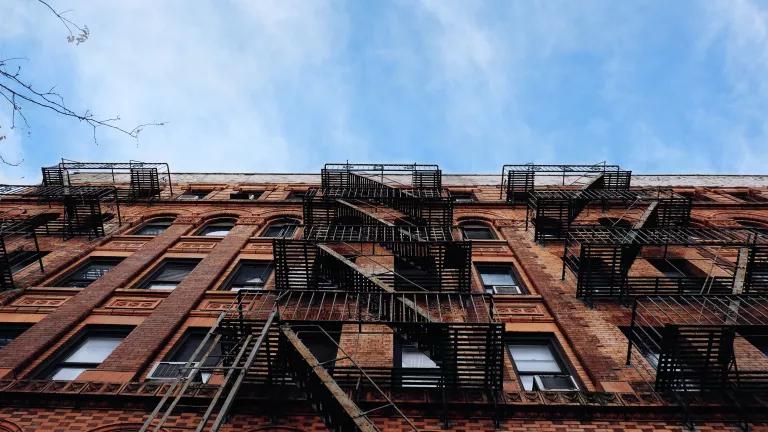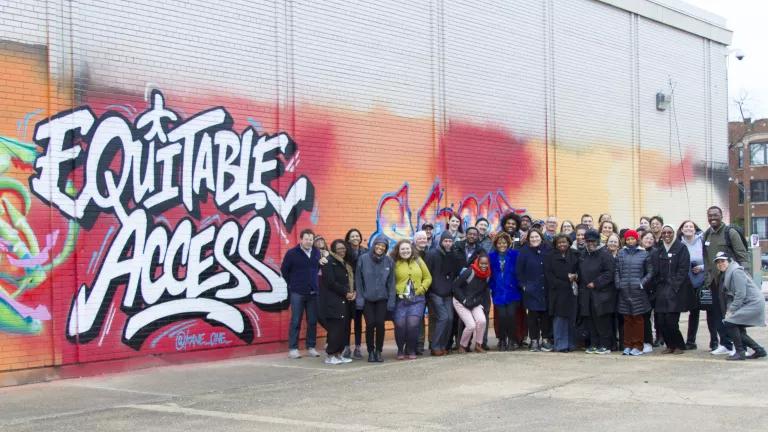Time for New York City to Act on Extreme Heat
The September heat wave now enveloping New York is a reminder that the time has arrived for officials in the nation’s largest city to further protect its residents from the dangers of extreme heat.
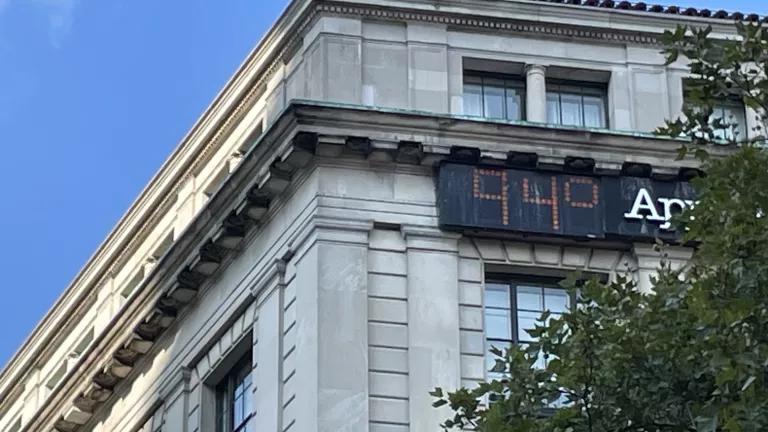
Extreme heat contributes to hundreds of NYC deaths every year. The City Council and the Mayor can help mitigate the risks.
Eric A. Goldstein
The burning of fossil fuels is cooking the planet as never before in recorded history. Wildfires have been raging from Canada to Greece. Ice levels around Antarctica have plummeted to historic lows. And sea surface temperatures have soared to record highs, endangering coral reefs, the invaluable marine ecosystems that are home to a quarter of all ocean life.
Another impact of climate-destroying fossil fuel emissions is extreme heat. NASA’s Goddard Institute for Space Studies reports that July 2023 was the hottest month on record since global data-keeping began in 1880. As the Institute’s director, Gavin Schmidt, concludes: “The science is clear—this isn’t normal.”
Extreme heat is a killer. In Europe, the summer heat waves of 2022 resulted in more than 61,000 deaths across the continent, according to a July 2023 study in the journal Nature Medicine. And in New York City alone, an average of 350 residents are dying prematurely every summer due to extreme hot weather, city health department statistics reveal.
New Yorkers are especially at risk from extreme heat due to the heat island effect. That’s the phenomenon in which cities—due to their high concentrations of buildings, roads, and rooftops—absorb the sun’s heat to a greater degree than suburbs or rural areas, thus boosting temperatures compared to outlying geographies.
Not all residents are equally at risk. Those most likely to die from extreme heat include the elderly, those with pre-existing health conditions, low-income residents, and those who are unhoused. The city health department reports that Black New Yorkers have extreme heat death rates that are two times higher than those of white residents.
Extreme heat, then, is an issue not just of public health protection but also of environmental justice.
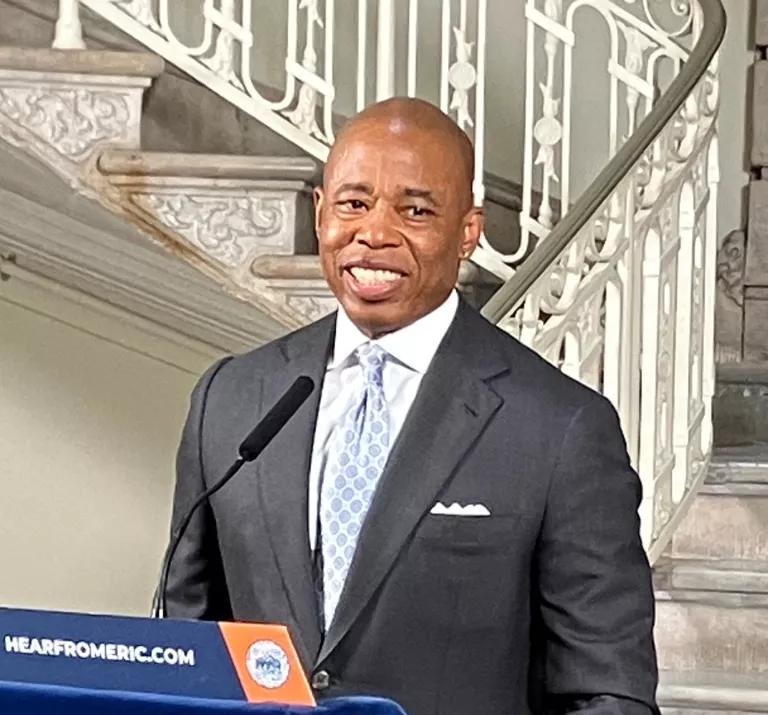
In his 2023 sustainability report, Mayor Eric Adams promised to tackle the problem of extreme heat, which kills more New Yorkers every year than any other kind of extreme weather event.
Eric A. Goldstein
To its credit, Mayor Eric Adams’s administration has recognized the challenge of extreme heat and highlighted the issue in its April 2023 sustainability report, PlaNYC: Getting Sustainability Done. Among the PlaNYC findings: Heat-related health risks continue to mount as the climate changes; the risks are greatest in parts of the city that have lots of pavement and concrete and few trees; and residents in Central Brooklyn, Upper Manhattan, and the South Bronx are especially vulnerable. PlaNYC also lays out strategies to address the problem, such as increasing access to indoor cooling, installing cool roofs, and expanding tree coverage throughout the city.
WE ACT for Environmental Justice, a West Harlem–based nonprofit organization, has for years been advocating for a comprehensive response to the growing problem of extreme heat in New York City. The WE ACT staff recently organized an Extreme Heat Coalition, of which NRDC is a part, to press for governmental action.
Actions that the WE ACT–led coalition is seeking to advance include city council legislation that would expand New York City’s street tree canopy to extend the cooling shade that street trees provide to every city neighborhood. Numerous studies have demonstrated that the shade provided by trees can lower urban air temperatures significantly (in addition to beautifying neighborhoods and reducing air pollution). One analysis in The Lancet medical journal found that up to 40 percent of extreme heat deaths in European cities could have been prevented if the tree canopies in those cities covered 30 percent of their land areas.
In the New York, Intro. 1065—sponsored by councilmembers Erik Bottcher, Gale Brewer, Shekar Krishnan, and 19 of their colleagues—would advance that objective by requiring the Department of Parks and Recreation to create an Urban Forest Master Plan aimed at increasing tree and vegetative cover throughout the city. NRDC and a host of elected officials and nonprofit organizations have recommended that this legislation set a specific goal of achieving 30 percent tree cover across the city by 2035. (Currently, about 22 percent of the city falls under the existing tree canopy.)
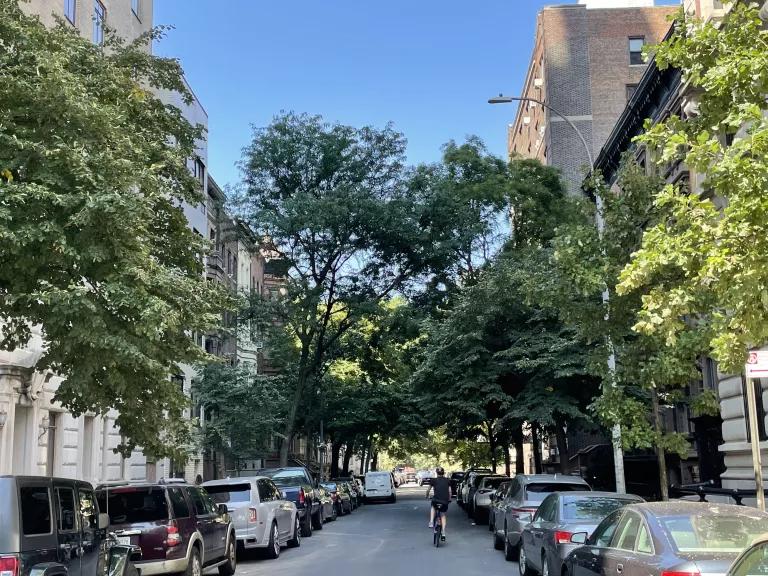
Street trees offer shade and cooling and can prevent extreme heat deaths.
Eric A. Goldstein
Other sensible strategies outlined in the WE ACT agenda include proposals for council legislation to ensure that the city’s existing cooling center program be enhanced and expanded, as well as legislation mandating the establishment of maximum indoor temperature requirements that kick in when outdoor temperatures peak. This latter recommendation would engage landlords in sharing responsibility for providing cooling to tenants in summer months, similar to existing laws directing that property owners supply heat to apartments during the winter. The full set of WE ACT recommendations is here.
There is growing recognition that extreme heat is among the most serious climate-related threats facing New Yorkers (and city residents everywhere).
Here’s hoping that the city council and Mayor Adams can work together this fall to advance Intro. 1065 and other extreme heat mitigation strategies to safeguard our most vulnerable neighbors from the growing dangers of a hotter planet.
This blog provides general information, not legal advice. If you need legal help, please consult a lawyer in your state.

